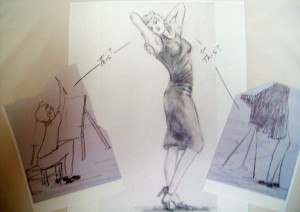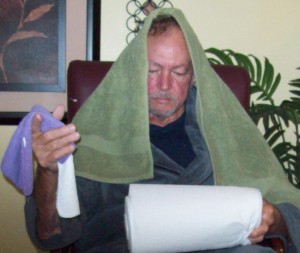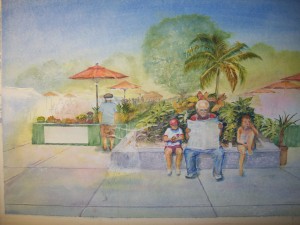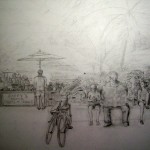
Should you sketch or take photographs to capture your inspirations as an artist. If you’re an artist, and sketching does not come spontaneous and rewarding, don’t concern yourself, it soon will. It’ll become a natural habit as you find yourself unconsciously reaching for graphite and substrate. An artist needs to continuously sketch, so let not your heart be troubled, you soon will find yourself massaging this need as your life becomes sketch full. However, as important as this endeavor is, this artist recommends you keep a camera nearby.
In the past, there have been many discussions (and sometime heated arguments) as to whether an artist should use photographs for their artistic works. I think by now, the conflict is settled. Most artist of today feel anything it takes to successfully bring forward an artist’s talent to their personal satisfaction is acceptable by the majority. I do both. Often, I sketch from the natural scene while taking photographs. I also print the photographs and rearrange them, move the different parts around, paste them in different places, and then sketch using earlier sketches and photos to create a composition. It works for me. I also photograph myself. Why not? I am my favorite model in many cases.


For example, these two
photos of me were very helpful in two different pictures.
The one on the left is used in a work I lovingly call “a work in progress,” since it is not finished (shown below). The photograph on the right is posing for my work I call “Grinding Gears of Time,” an 18″X24″ graphite drawing. This is also shown below.


So, as you can see, sketching can be very important, and so can a camera. Both methods of capturing your needs to complete your work is important. The Grinding Gears of Time was more simple than the street scene in “a work in progress.” I sketched, as well as, took many photographs for this one.


From sketching pieces and parts of the composition, to studying photographs of foliage, trees, and even bicycles, this is why I call the work a “work in progress.” I always find something in the sketches that I want to add, or take away. It doesn’t sound too professional of me, but I don’t care. I’m driven by a different motivation. Don’t ask me what it is, for I do not know.
Tip# 1: Photographs are a great guide for factual information, but it should be used seldom for color composition. It tends to be monochrome or tonal. Remember, the digital colors are in a mixture of cyan or magenta and a paint pigment can not pick this up accurately. It is always best to mix your colors with nature as your guide, outside in the true atmosphere. When time and ample supply allows, when sketching and photographing a possible composition, it helps to mix some colors that you are seeing and experiencing at the time (if it’s what you want to capture). Make some color swatches from the colors you imitate from nature.
Tip# 2: When drawing people, approach the subject to suggest they are alive. Try to draw their body language to suggest any moment they might change their pose and move about. The quick sketch of the woman at the top of the article seems as any moment she might move. She’s a bit dramatic, but the pose is for emphasis. However, we all know she can’t stand like that forever. We also know the artist that is sketching her will soon drop his arm and begin drawing or painting her.
